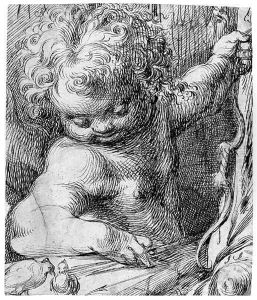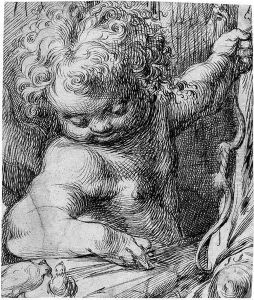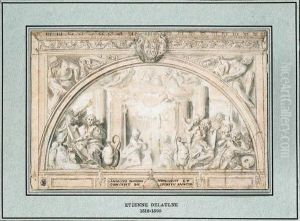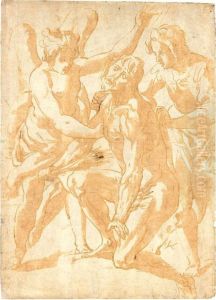Martin Frminet Paintings
Martin Fréminet was a noteworthy French painter and draftsman born in Paris in 1567. He played a significant role in the late Mannerist and early Baroque periods of art in France, contributing to the transition between the two styles. Fréminet's works are characterized by their dynamic compositions, intense use of color, and the dramatic interplay of light and shadow, elements that would come to define the Baroque style. Despite his importance, Fréminet is less well-known than some of his contemporaries, partly due to the overshadowing fame of other artists from his era and the limited survival of his works.
Fréminet received his early artistic training from his father, who was also an artist, before continuing his studies in Italy. His time in Italy was crucial for his development as an artist; he was profoundly influenced by the works of Michelangelo, the Carracci family, and other Italian masters. This influence is evident in his preference for grandiose themes, often drawn from mythology or religious subjects, which he executed with a dramatic flair and a keen attention to human anatomy.
Upon his return to France, Fréminet garnered the patronage of influential figures at the French court, including King Henry IV. One of his most significant commissions was the decoration of the Chapel of the Trinity in Fontainebleau, a project that occupied a considerable part of his career and is regarded as his masterpiece. The chapel's ceiling and walls are adorned with Frescoes by Fréminet, showcasing his mastery of large-scale compositions and his ability to imbue his religious subjects with a sense of vitality and emotional depth.
Despite the high regard in which he was held during his lifetime, Martin Fréminet's reputation has somewhat faded over the centuries. The reasons for this are manifold, including the destruction or deterioration of some of his major works and the changing tastes in art. Nevertheless, his contribution to the development of French art, especially in fostering the early Baroque style, remains significant. Fréminet died in Paris in 1619, leaving behind a legacy that, while not as widely recognized today, was influential in the evolution of French painting at the cusp of the 17th century.



